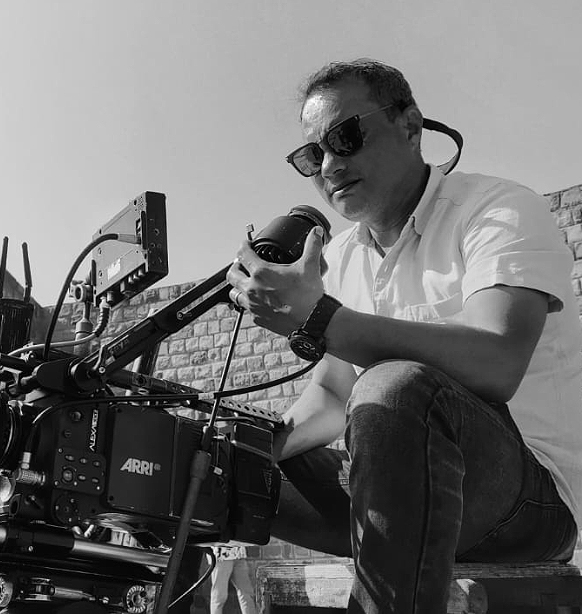About us

Cinematographer Virendra K began his career in early 2000s as an assistant cameraman who impressed industry stalwarts like Binod Pradhan enough to get an opportunity to work on a film like Rang De Basanti as an assistant cameraman .
Thereon, he emerged as a cinematographer with a unique talent of capturing imagery, as well as for acutely projecting the mood and emotion of a scene, setting a tone that coherently holds the narrative, as well as the audience’s attention. But more than that, he came across as a team player who always tried to understand the writer/director’s perspective and put the story above everything.
In subsequent years, he continued working as an assistant cameraman on prestigious projects like Taare Zameen Par and Lal Rang, before progressing and and soon started getting contracts as the chief DOP for television serials, documentaries and commercials. Since then, he has worked on over a dozen movies, dozens of commercials, and a few series and documentaries in various capacities, capturing landscapes from the remotest parts of India to exotic locales in Canada, England and other such picturesque countries, doing justice to the scale while remaining attuned to intimate details and emotions.
Virendra K’s career highlight remains his work on the documentary ‘Subah-E-Banaras’ that was awarded the best documentary award at Jaipur Film Festival.
“My love affair with the camera started when, I got intrigued by how things look just a little different in movies; by how the alleys look darker and the sky looks clearer.
With time, as I studied the art and experimented on various projects, I came to realise that the lens is a medium that helps me see things clearly, for what they are and what I want others to see, both in terms of beauty and pain.
Cinematography is nothing but a language used for storytelling, and the process similar to writing. Just as a writer puts one word after another, a cinematographer puts one frame after another until a tale is told. And just as a writer, a cinematographer needs to employ their imagination and visualize the frame before it is put together. For this, the cinematographer effectively uses numerous tools like lights and angles, but their efforts will only bear fruit if they go beyond knowing and understanding the story, and internalise it…live it! Unless cinematographers do this, they tell superficial tales at best, and lie at worst.
In the process, a cinematographer learns to adeptly walk the tightrope between beatification and realistic portrayal, fact and fantasy, making dreams real and reality dreamlike, and creating and capturing an image.
The many happy accidents that happen in the process are an added bonus.”
– Virendra K.